J. Crayton Pruitt Foundation
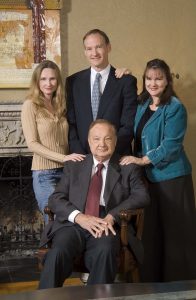
About Dr. J. Crayton Pruitt, Sr.
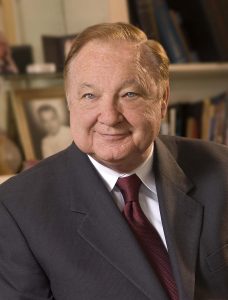
On an ordinary night in 1995, J. Crayton Pruitt Sr. went to bed thinking he was in perfect health. He awoke the next morning weak and unable to stand. He’d had a heart attack while he slept. Doctors quickly performed coronary bypass surgery, but three days later his heart slipped into ventricular fibrillation. Pruitt was flown by helicopter to Shands Hospital at UF, where a surgeon connected him to a biventricular assist device that would keep him alive while he waited for a donor heart.
The biventricular assist device is an example of biomedical engineering. Fusing engineering with medicine, it focuses on the search for new materials, techniques and technologies to improve health care. In 1995, the apparatus was the size of a washing machine and sat at the foot of Pruitt’s bed.Today’s assist devices are small enough to be entirely implanted into patients.
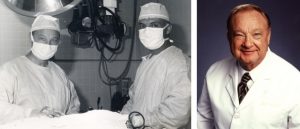
Pruitt is an accomplished cardiothoracic surgeon, researcher and inventor. He moved to St. Petersburg in 1963 and soon built a thriving private surgical practice. Pruitt devoted his career to the treatment of stroke. His father suffered a debilitating series of strokes, which motivated Pruitt to vigorously research methods of improving available technology. He pioneered the surgical treatment of carotid artery arteriosclerosis for stroke prevention and is thought to have performed more of these surgeries than any other surgeon in the world.
Ten days after Pruitt arrived in Gainesville, a woman in the Florida Panhandle suffered a stroke and died. Her heart was donated to Pruitt.
The experience left him with deep appreciation for biomedical engineering and for UF. In 2000, Pruitt expressed his gratitude through his first donation to the biomedical engineering graduate program at UF’s College of Engineering. Largely because of his $2 million gift, in 2002 Biomedical Engineering became a department. In Dec. 2005, he and his children, Crayton Jr., Helen and Natalie, added to the first gift, bringing the family’s total investment in Biomedical Engineering to $10 million.
Although he passed away on October 8, 2011, his legacy continues and is formally honored every year during Pruitt Research.
College Leadership
1988-1999
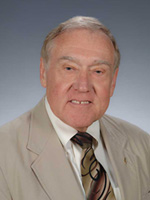 From 1988 onwards, Dr. Winfred Phillips spearheaded a transformative era for the College, marked by the amplification of research programs and the provision of unparalleled engineering education. Phillips’s visionary leadership was instrumental in propelling the University of Florida into a new paradigm, where it emerged as a prominent innovator. Recognized as a true “game changer,” Phillips’s profound impact on the university’s trajectory cannot be overstated. His unwavering dedication and strategic acumen solidified UF’s position as a catalyst for innovation, paving the way for groundbreaking advancements and establishing a legacy that continues to shape the institution to this day.
From 1988 onwards, Dr. Winfred Phillips spearheaded a transformative era for the College, marked by the amplification of research programs and the provision of unparalleled engineering education. Phillips’s visionary leadership was instrumental in propelling the University of Florida into a new paradigm, where it emerged as a prominent innovator. Recognized as a true “game changer,” Phillips’s profound impact on the university’s trajectory cannot be overstated. His unwavering dedication and strategic acumen solidified UF’s position as a catalyst for innovation, paving the way for groundbreaking advancements and establishing a legacy that continues to shape the institution to this day.
2001-2009
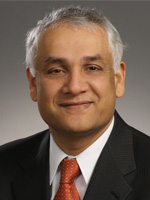 During Dr. Pramod Khargonekar’s esteemed tenure as dean from 2001 until 2009, the College achieved exceptional milestones under his visionary guidance. Notably, the J. Crayton Pruitt Family Department of Biomedical Engineering was conceived and subsequently established, leaving an indelible mark on the institution’s legacy. Additionally, through strategic partnerships and collaborations, the College gave rise to a plethora of centers and institutes, solidifying its position as a hub of groundbreaking research. Khargonekar’s transformative leadership extended beyond traditional boundaries, as evidenced by the revitalization of the College’s distance-education programs, exemplified by the successful launch of UF EDGE. These far-reaching initiatives embody the College’s commitment to innovation, excellence, and academic advancement under Khargonekar’s astute direction.
During Dr. Pramod Khargonekar’s esteemed tenure as dean from 2001 until 2009, the College achieved exceptional milestones under his visionary guidance. Notably, the J. Crayton Pruitt Family Department of Biomedical Engineering was conceived and subsequently established, leaving an indelible mark on the institution’s legacy. Additionally, through strategic partnerships and collaborations, the College gave rise to a plethora of centers and institutes, solidifying its position as a hub of groundbreaking research. Khargonekar’s transformative leadership extended beyond traditional boundaries, as evidenced by the revitalization of the College’s distance-education programs, exemplified by the successful launch of UF EDGE. These far-reaching initiatives embody the College’s commitment to innovation, excellence, and academic advancement under Khargonekar’s astute direction.
2009 -2022
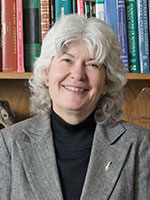 Under the stewardship of Dr. Cammy Abernathy, who served as dean from 2009 until 2022, the Herbert Wertheim College of Engineering witnessed remarkable growth and transformative accomplishments. Notably, the imminent inauguration of the cutting-edge Malachowsky Hall for Data Science & Information Technology stands as a testament to the college’s commitment to advancing technological frontiers. Furthermore, the college boasts a distinguished faculty renowned for its diversity, surpassing that of any other engineering college among the public Association of American Universities (AAUs). This diverse pool of exceptional scholars has played a pivotal role in fostering an ever-expanding range of strategic partnerships, spanning academia, industry, government, and corporations. These collaborations have effectively harnessed the profound expertise of Gator Engineering, empowering its influence across diverse sectors of society.
Under the stewardship of Dr. Cammy Abernathy, who served as dean from 2009 until 2022, the Herbert Wertheim College of Engineering witnessed remarkable growth and transformative accomplishments. Notably, the imminent inauguration of the cutting-edge Malachowsky Hall for Data Science & Information Technology stands as a testament to the college’s commitment to advancing technological frontiers. Furthermore, the college boasts a distinguished faculty renowned for its diversity, surpassing that of any other engineering college among the public Association of American Universities (AAUs). This diverse pool of exceptional scholars has played a pivotal role in fostering an ever-expanding range of strategic partnerships, spanning academia, industry, government, and corporations. These collaborations have effectively harnessed the profound expertise of Gator Engineering, empowering its influence across diverse sectors of society.
2023-
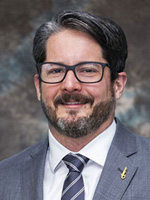 Interim Dean Dr. Forrest Masters is a Civil and Coastal Engineering professor in the Engineering School of Sustainable Infrastructure & Environment at the University of Florida. His research primarily focuses on hurricane effects on the built environment. Dr. Masters has conducted field experiments in 36 named storms, including recent Category 4 storms Harvey and Laura and Category 5 Michael. He also created one of seven NSF Natural Hazards Engineering Research Infrastructure (NHERI) experimental facilities to study the damaging effects of extreme wind events on civil infrastructure. Dr. Masters has received support from 50 grants from state, federal and private sources, including the NSF Faculty Early Career Development and Major Research Instrumentation Programs. He has published more than 100 papers in peer-reviewed journals and conference proceedings and given more than 100 invited presentations.
Interim Dean Dr. Forrest Masters is a Civil and Coastal Engineering professor in the Engineering School of Sustainable Infrastructure & Environment at the University of Florida. His research primarily focuses on hurricane effects on the built environment. Dr. Masters has conducted field experiments in 36 named storms, including recent Category 4 storms Harvey and Laura and Category 5 Michael. He also created one of seven NSF Natural Hazards Engineering Research Infrastructure (NHERI) experimental facilities to study the damaging effects of extreme wind events on civil infrastructure. Dr. Masters has received support from 50 grants from state, federal and private sources, including the NSF Faculty Early Career Development and Major Research Instrumentation Programs. He has published more than 100 papers in peer-reviewed journals and conference proceedings and given more than 100 invited presentations.
BME at UF: Pre-department
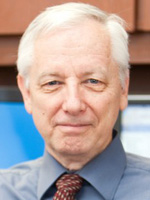 Christopher Batich, Ph.D.
Christopher Batich, Ph.D.
Professor, Materials Science & Engineering,
University of Florida
In the mid-80s, faculty members including Dr. Chris Batich (materials science and engineering) started a course of study in BME. A decade later, Dean Win Phillips asked Dr. Batich to start a formal Biomedical Engineering program. Dr. Batich organized the Biomedical Engineering Graduate Academic Program Committee (BEGAP) The committee included professors in engineering and Drs. Wes Bolch and David Hintenlang (nuclear engineering); Drs. Rich Melker and Hans van Oostrum (anesthesiology). The Whitaker Foundation provided a $1M grant (with a $1M match from the state) to help fund the program.
 Anthony Brennan, Ph.D.
Anthony Brennan, Ph.D.
Margaret A. Ross Professor,
Materials Science & Engineering,
University of Florida
In 1997, a graduate curriculum was produced and the first class of 13 students enrolled that fall. Dr. Tony Brennan became the first graduate coordinator in BME and helped the program grow to 75 students.